Filter by
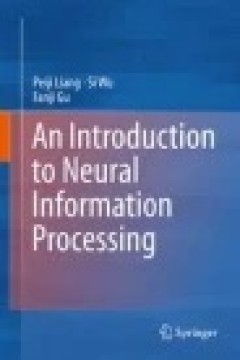
An Introduction to Neural Information Processing
This book provides an overview of neural information processing research, which is one of the most important branches of neuroscience today. Neural information processing is an interdisciplinary subject, and the merging interaction between neuroscience and mathematics, physics, as well as information science plays a key role in the development of this field. This book begins with the anatomy of…
- Edition
- Ed. 1
- ISBN/ISSN
- 978-94-017-7393-5
- Collation
- XI, 328
- Series Title
- -
- Call Number
- 616.80076 LIA i

An Introduction to Mathematical Epidemiology
The book is a comprehensive, self-contained introduction to the mathematical modeling and analysis of infectious diseases. It includes model building, fitting to data, local and global analysis techniques. Various types of deterministic dynamical models are considered: ordinary differential equation models, delay-differential equation models, difference equation models, age-structured PDE model…
- Edition
- Ed. 1
- ISBN/ISSN
- 978-1-4899-7612-3
- Collation
- XIV, 453
- Series Title
- Texts in Applied Mathematics
- Call Number
- 576 MAR i
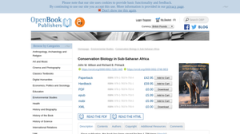
Conservation Biology in Sub-Saharan Africa
Overview: Conservation Biology in Sub-Saharan Africa comprehensively explores the challenges and potential solutions to key conservation issues in Sub-Saharan Africa. Easy to read, this lucid and accessible textbook includes fifteen chapters that cover a full range of conservation topics, including threats to biodiversity, environmental laws, and protected areas management, as well as relate…
- Edition
- -
- ISBN/ISSN
- -
- Collation
- -
- Series Title
- -
- Call Number
- 570 WIL c
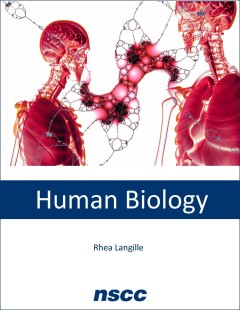
NSCC Human Biology
In this survey text, directed at those not majoring in biology, we dispel the assumption that a little learning is a dangerous thing. We hope that by skimming the surface of a very deep subject, biology, we may inspire you to drink more deeply and make more informed choices relating to your health, the environment, politics, and the greatest subject that are all of us are entwined in, life itself.
- Edition
- -
- ISBN/ISSN
- -
- Collation
- -
- Series Title
- -
- Call Number
- 570 LAN n
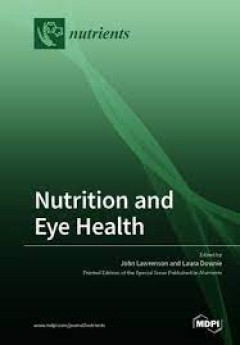
Nutrition and Eye Health
Blindness and visual impairment impact significantly on an individual’s physical and mental well-being. Loss of vision is a global health problem, with approximately 250 million of the world’s population currently living with vision loss, of which 36 million are classified as blind. Visual impairment is more frequent in the elderly, with cataract and age-related macular degeneration (AMD) a…
- Edition
- -
- ISBN/ISSN
- 978-3-03921-991-9
- Collation
- -
- Series Title
- -
- Call Number
- 613 NUT
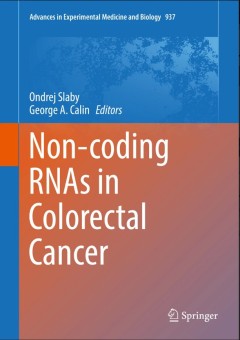
Non-coding RNAs in Colorectal Cancer
This is the first book to provide a broad framework for obtaining an in depth understanding of the state-of-the-art knowledge on abnormalities of non-coding RNAs found to be associated with colorectal cancer pathogenesis. Readers will discover possible mechanisms underlying the substantial roles played by non-coding RNAs in molecular hallmarks of colorectal cancer.This work further provides the…
- Edition
- 1
- ISBN/ISSN
- 978-3-319-42057-8
- Collation
- VIII, 252
- Series Title
- Advances in Experimental Medicine and Biology
- Call Number
- -
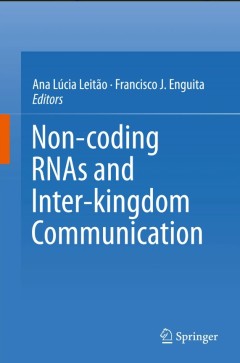
Non-coding RNAs and Inter-kingdom Communication
This book presents a state-of-the-art compilation of articles on the role of non-coding RNAs as pivotal molecules for establishing functional relationships between different organisms. It also describes how non-coding RNA molecules can act as dynamic communication devices and how they modulate the interaction between different kingdoms. It describes examples including viruses, bacteria, fungi, …
- Edition
- 1
- ISBN/ISSN
- 978-3-319-39494-7
- Collation
- VIII, 251
- Series Title
- -
- Call Number
- -
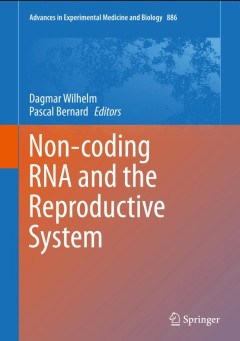
Non-coding RNA and the Reproductive System
This book provides an overview of the role and function of regulatory RNAs that lack protein-coding potential in key reproductive tissues. This includes the role of small interfering RNAs (siRNAs), microRNAs (miRNAs), PIWI-interacting RNAs (piRNAs), small nucleolar RNAs (snoRNAs) and long non-coding RNAs (lncRNAs). Through clear, detailed and comprehensive debate, international leading experts …
- Edition
- 1
- ISBN/ISSN
- 978-94-017-7415-4
- Collation
- VII, 198
- Series Title
- Advances in Experimental Medicine and Biology
- Call Number
- -
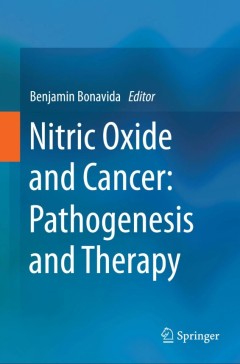
Nitric Oxide and Cancer: Pathogenesis and Therapy
Advances in Nitric Oxide and Cancer is a volume that serves to give the latest research on nitric oxide (NO) and cancer. More specifically, the volume reviews significant advances in the application of NO-mediated drugs. The volume explores nitric oxide and its relationship to cancer spanning from its roles in the pathogenesis, prognosis, gene and protein modifications, regulation of resistance…
- Edition
- 1
- ISBN/ISSN
- 978-3-319-35259-6
- Collation
- XXIII, 308
- Series Title
- -
- Call Number
- -
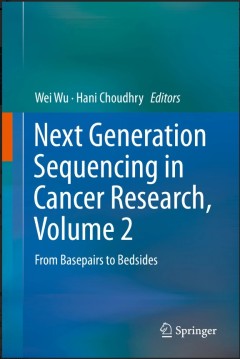
Next Generation Sequencing in Cancer Research, Volume 2
Latest generation sequencing revolutionizes the fields of cancer research and oncology. This follow-up volume focuses more extensively on single cell sequencing of cancer and trials in drug resistance. Another exciting feature is the bioinformatics tools given, that can be used on cancer genome studies. Scientists around the world are attempting to find the root cause of cancer. A reasonable ca…
- Edition
- 1
- ISBN/ISSN
- 978-3-319-15810-5
- Collation
- XVIII, 493
- Series Title
- -
- Call Number
- -
 Computer Science, Information & General Works
Computer Science, Information & General Works  Philosophy & Psychology
Philosophy & Psychology  Religion
Religion  Social Sciences
Social Sciences  Language
Language  Pure Science
Pure Science  Applied Sciences
Applied Sciences  Art & Recreation
Art & Recreation  Literature
Literature  History & Geography
History & Geography